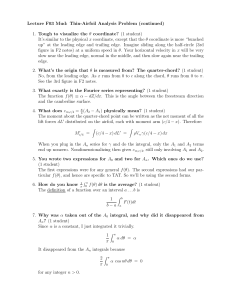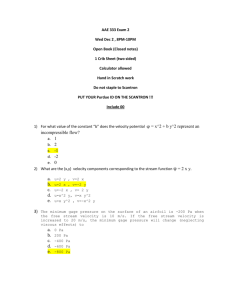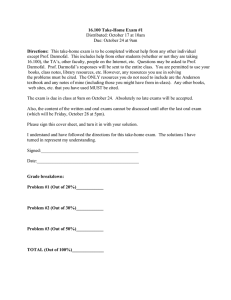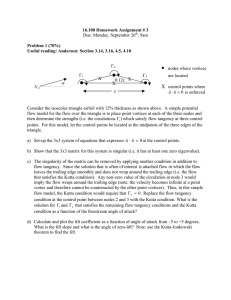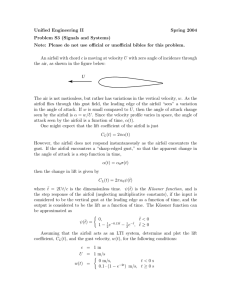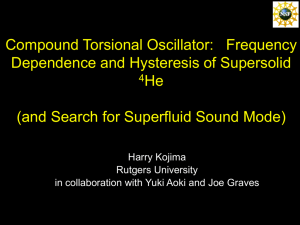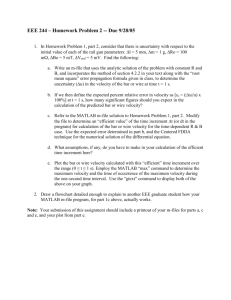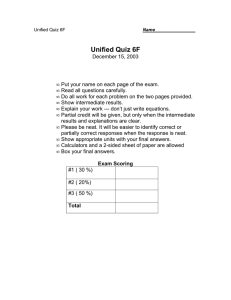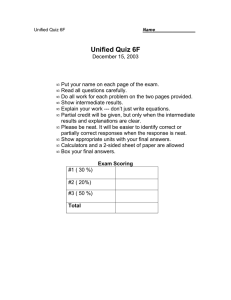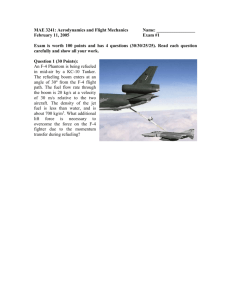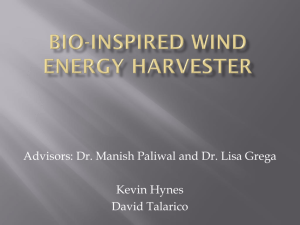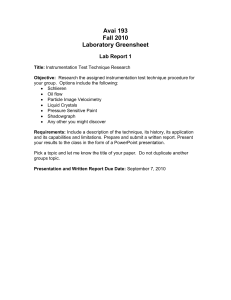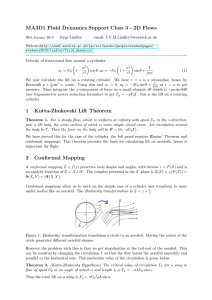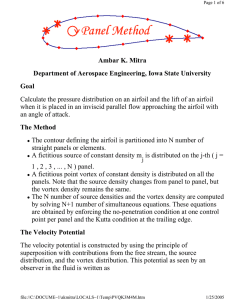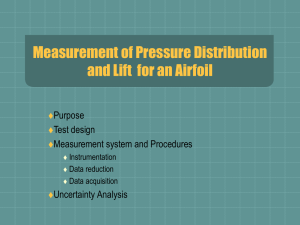Homework 5 - the AOE home page
advertisement
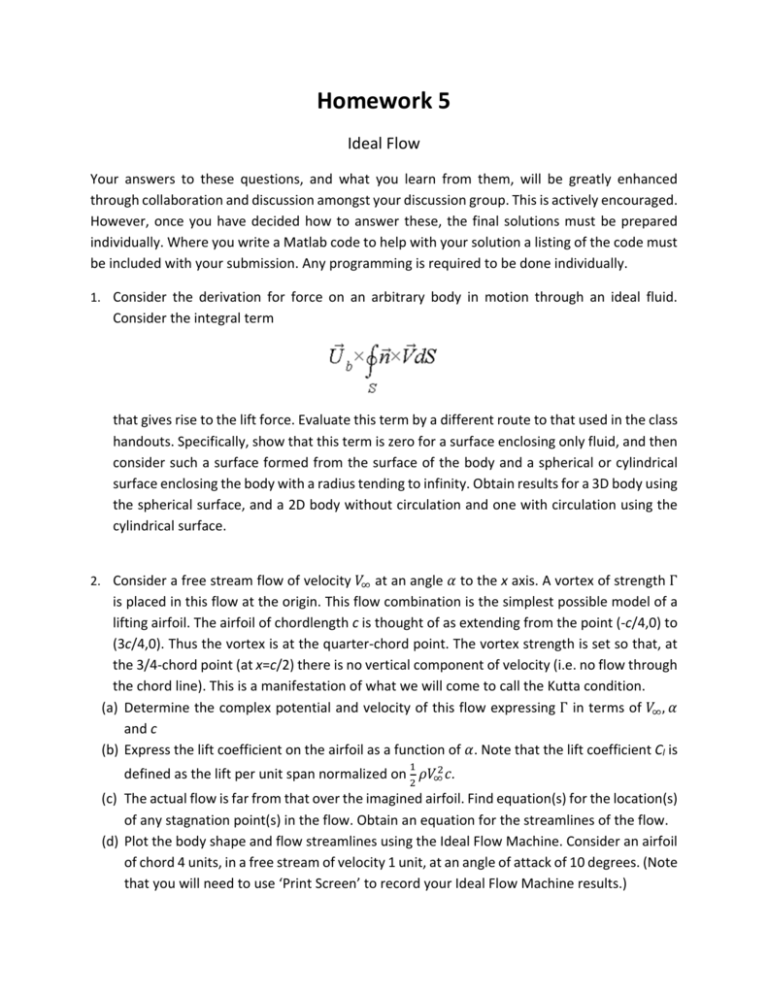
Homework 5 Ideal Flow Your answers to these questions, and what you learn from them, will be greatly enhanced through collaboration and discussion amongst your discussion group. This is actively encouraged. However, once you have decided how to answer these, the final solutions must be prepared individually. Where you write a Matlab code to help with your solution a listing of the code must be included with your submission. Any programming is required to be done individually. 1. Consider the derivation for force on an arbitrary body in motion through an ideal fluid. Consider the integral term that gives rise to the lift force. Evaluate this term by a different route to that used in the class handouts. Specifically, show that this term is zero for a surface enclosing only fluid, and then consider such a surface formed from the surface of the body and a spherical or cylindrical surface enclosing the body with a radius tending to infinity. Obtain results for a 3D body using the spherical surface, and a 2D body without circulation and one with circulation using the cylindrical surface. 2. Consider a free stream flow of velocity at an angle to the x axis. A vortex of strength Γ is placed in this flow at the origin. This flow combination is the simplest possible model of a lifting airfoil. The airfoil of chordlength c is thought of as extending from the point (‐c/4,0) to (3c/4,0). Thus the vortex is at the quarter‐chord point. The vortex strength is set so that, at the 3/4‐chord point (at x=c/2) there is no vertical component of velocity (i.e. no flow through the chord line). This is a manifestation of what we will come to call the Kutta condition. (a) Determine the complex potential and velocity of this flow expressing Γ in terms of , and c (b) Express the lift coefficient on the airfoil as a function of . Note that the lift coefficient Cl is defined as the lift per unit span normalized on . (c) The actual flow is far from that over the imagined airfoil. Find equation(s) for the location(s) of any stagnation point(s) in the flow. Obtain an equation for the streamlines of the flow. (d) Plot the body shape and flow streamlines using the Ideal Flow Machine. Consider an airfoil of chord 4 units, in a free stream of velocity 1 unit, at an angle of attack of 10 degrees. (Note that you will need to use ‘Print Screen’ to record your Ideal Flow Machine results.) 3. The two wing tip vortices produced by an aircraft tend to convect each other towards the ground. The figure shows a model of this flow, consisting of two ideal point vortices, separated by distance s a distance h above the ground. Determine (a) the complex potential and velocity of this flow (b) the velocity (both components) of the two vortices at the instant shown, and (c) an equation, or computation (using Matlab), of the path to be traced out by the vortices over time. (d) Draw the flow field at the instant shown (taking s=h) using the Ideal Flow Machine. 4. The point singularities we have introduced may be generalized by distributing their effects along lines (usually called 'sheets' or 'panels') rather than concentrating their effects at a point. The strength of such singularities is expressed per unit length ‐ e.g. volumetric outflow per unit length, in the case of a source panel, or circulation per unit length of a vortex panel. Thus, each differential element of the sheet may be thought of as behaving as the equivalent point singularity with a strength given by the local sheet strength times the differential length of the element. (a) Find an integral expression for the complex velocity field produced by a vortex sheet of length l lying on the x axis, allowing the sheet strength to be a function of distance along it. (b) Reduce this to an algebraic expression in which the strength varies linearly with distance along the sheet from to . (c) Visualize the flow produced by this 1 and =2 and unit sheet length by plotting velocity vectors in Matlab. sheet with

